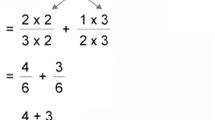Abstract
This study investigates how working memory capacity may account for why better writers are able to coordinate mutliple subprocesses more easily than poor writers. Writing, while distracted by secondary task demands, offers one way to explore the importance of working memory to the structure inherent in the writing subprocesses. For the study, the author chose experiments based on the finding that good writers manage the simultaneous demands of writing subprocesses better than poor writers(Levy & Ransdell, 1995, pp. 767–779). Students composed essays while distracted by concurrent loads on working memory. The author found that when relatively minor demands were made on working memory, i.e., unattended and attended background speech, these variables caused a decrease in fluency, but had no effect on quality. Attended, but not unattended, speech reliably reduced average sentence length. A concurrent task of remembering six digits reduced fluency by nearly 50% also reliably decreased quality and sentence length. Resources which are relatively stable in the face of dual-task demands were allocated for the regulation of writing quality, sentence length, pause duration and location. The author found that better writers write longer sentences, pause for shorter durations and at clause boundaries more often than poorer writers. Competing tasks first disrupt the timing of writing and only impact quality when larger secondary task demands in working memory are required.
Similar content being viewed by others
REFERENCES
Aaronson, D. & Scarborough, H.S. (1977). Performance theories for sentence coding: Some quantitative models. Journal of Verbal Learning and Verbal Behavior 16, 277–302.
Baddeley, A.D. (1986). Working memory. Oxford: Oxford University Press.
Baddeley, A.D. & Hitch, G. (1974). Working memory. In G.H. Bower (Ed.), The psychology of learning and motivation, Vol. 8 (pp. 47–89). New York: Academic Press.
Banbury, S. & Berry, D.C. (1998). Disruption of office-related tasks by speech and office noise. British Journal of Psychology 89, 499–517.
Bock, K. (1996). Language production: Methods and methodologies. Psychonomic Bulletin and Review 3, 395–421.
Brown, J.S., McDonald, J.L., Brown, T.L. & Carr, T.H. (1988). Adapting to processing demands in text production: The case of handwriting. Journal of Experimental Psychology: Human Perception and Performance 14, 45–59.
Cheung, H. & Kemper, S. Competing complexity metrics and adults production of complex sentences. Applied Psycholinguistics 13, 53–76.
Conway, A.R. & Engle, R.W. (1994). Working memory and retrieval: A resourcedependent inhibition model. Journal of Experimental Psychology: General 123, 354–373.
Daneman, M. & Carpenter, P. (1980). Individual differences in working memory and reading. Journal of Verbal Learning and Verbal Behavior 19, 450–466.
Daneman, M. & Green, I. (1986). Individual differences in comprehending and producing words in context. Journal of Memory and Language 25, 1–18.
Engle, R.W. & Conway, A.R. (1998). Working memory and comprehension. In R.H. Logie & K.J. Gihooly (Eds), Working memory and thinking (pp. 67–91). London: Psychology Press.
Engle, R.W., Tuholski, S.W., Laughlin, J.E. & Conway, A.R.A. (1999). Working memory, short-term memory and general fluid intelligence: A latent variable approach. Journal of Experimental Psychology: General 128, 309–331.
Gould, J.D. (1978). How experts dictate. Journal of Experimental Psychology: Human Perception and Performance 4, 648–661.
Just, M.A. & Carpenter, P.A. (1987). The psychology of reading and language comprehension. Boston: Allyn and Bacon.
Just, M.A. & Carpenter, P.A. (1992). A capacity theory of comprehension: Individual differences in working memory. Psychological Review 99, 122–149.
Kellogg, R.T. (1994). The psychology of writing. New York: Oxford University Press.
Kellogg, R.T. (1996). A model of working memory in writing. In C.M. Levy & S.E. Ransdell (Eds), The science of writing (pp. 57–71). Mahwah, New Jersey: Lawrence Erlbaum Associates.
Levy, C.M. & Ransdell, S. (2002). Writing with concurrent memory loads. In T. Olive & C.M. Levy (Eds), Contemporary tools and techniques for studying writing (pp. 9–30). Dordrecht, The Netherlands: Kluwer Academic Publishers.
Levy, C.M. & Ransdell, S.E. (1995). Is writing as difficult as it seems? Memory and Cognition 23, 767–779.
Madigan, R.J., Johnson, S.E. & Linton, P.W. (1994). Working memory capacity and the writing process. Paper presented at the annual meeting of the American Psychological Association, Washington, DC, June.
Matsuhashi, A. (1982). Explorations in the real-time production of written discourse. In Nystrand (Ed.), What writers know: The language, process, and structure of written discourse. New York: Academic Press.
McCutchen, D. (1996). A capacity theory of writing: Working memory in composition. Educational Psychology Review 8, 299–325.
Nelson, M.S. & Denny, E.D. (1993). The Nelson-Denny Reading Test. Boston: Houghton-Mifflin.
Olive, T., Kellogg, R.T. & Piolat, A. (2002). The triple task technique for studying the process of writing. In T. Olive & C.M. Levy (Eds), Contemporary tools and techniques for studying writing (pp. 9–30). Dordrecht, The Netherlands: Kluwer Academic Publishers.
Ransdell, S.E. & Levy, C.M. (1999). Writing, reading, and speaking memory spans and the importance of resource flexibility. In M. Torrance & G. Jeffrey (Eds), The cognitive demands of writing: Processing capacity and working memory in text production (pp. 99–113). Amsterdam: Amsterdam University Press.
Ransdell, S.E. & Levy, C.M. (1996). Working memory constraints on writing performance. In C.M. Levy & S.E. Ransdell (Eds), The science of writing (pp. 93–101). Mahwah, New Jersey: Lawrence Erlbaum Associates.
Towse, J.N., Hitch, G.J. & Hutton, U. (1998). A re-evaluation of working memory capacity in children. Journal of Memory and Language 39, 195–217.
Author information
Authors and Affiliations
Rights and permissions
About this article
Cite this article
Ransdell, S., Levy, C.M. & Kellogg, R.T. The structure of writing processes as revealed by secondary task demands. L1-Educational Studies in Language and Literature 2, 141–163 (2002). https://doi.org/10.1023/A:1020851300668
Issue Date:
DOI: https://doi.org/10.1023/A:1020851300668




